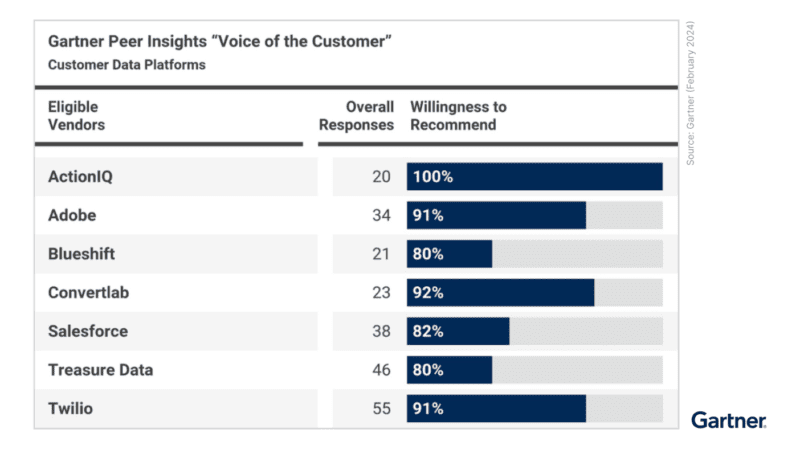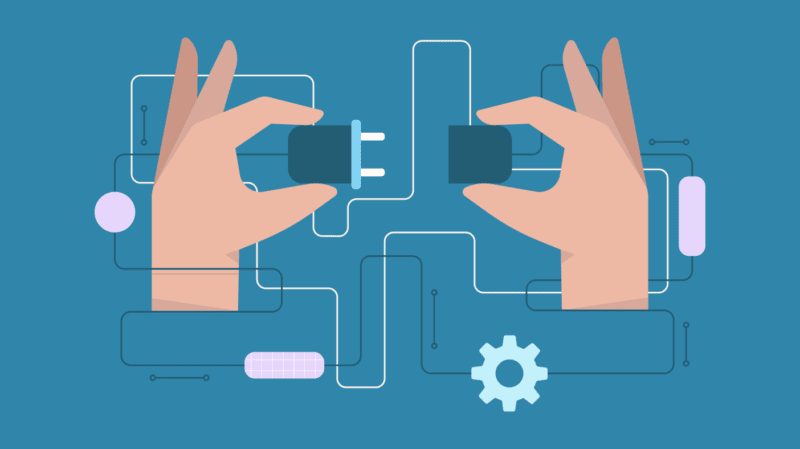How Atlassian’s Modern Data Stack Optimizes IT Investments for Scale

For enterprise organizations, designing a modern data stack to support the business long term is of utmost importance. But there is a never-ending list of considerations that impact where and how companies choose to invest — evolving business strategies, increasing scale and macroeconomic volatility, just to name a few.
In an effort to curate custom solutions that align seamlessly with existing systems and strategies, many organizations have gone down the “build” path when considering whether to build or buy a CDP — opting for total control and flexibility to create solutions aligned with their specific vision and infrastructure.
An engineering-centric enterprise at its core, Atlassian made internal building a prevalent part of its earlier IT strategy. But this approach presented complex challenges down the line as the company expanded and evolved.
In our recent webinar — How Atlassian is Upleveling Data Scale & Flexibility While Maximizing Existing IT Initiatives — we spoke to Sravan Gupta, Senior Manager of GTM Systems at Atlassian, about the company’s architecture journey as a rapidly growing, complex B2B organization and how it’s creating a modern data stack to maintain control while driving scale. Here are the top three tips from that discussion.
How Atlassian’s Modern Data Stack Optimizes IT Investments for Scale
Choose Composable Solutions to Complement Existing Systems
Many organizations that make early investments in internal tooling and customer 360 initiatives reach a point where systems that were once effective start hitting speed bumps as the company evolves. These challenges eventually unfold when working with solutions that are:
- Unable to scale with the organization
- Require rigid inefficient processes
- Involve limitations that prevent teams from expanding into advanced use cases
At the same time, these early IT initiatives to centralize data are usually exacting, costly and time-consuming so data teams struggle to achieve a balance between 1) salvaging these investments and 2) enabling the organization to scale, expand into modern strategies and drive business goals.
“Our data engineering teams have spent three years of effort aggregating customer data into our data warehouses in a very standardized organized manner,” said Sravan Gupta, Senior Manager of GTM Systems at Atlassian. “We don’t want to have to start over.”
Composable technology (like a composable CDP) enables organizations that have invested in their own data centralization to seamlessly integrate external solutions with existing infrastructure — operationalizing past investments while being able to power advanced use cases, optimize data for specific needs across the organization and achieve true scale as part of their modern data stack.
“Being able to integrate with our internal services and doing so at scale is absolutely key for us so the composable architecture of AIQ making that possible is one of the main reasons why we went with AIQ in the first place,” Gupta said.
With more organizations than ever investing in centralizing data in cloud data warehouses, the need to enable connectivity with other systems is increasing. Emerging processes like reverse ETL enable IT teams to push data from their homegrown customer 360 solution to the downstream systems (and teams) that need to access it.
“Reverse ETL is very crucial for us because our data engineering teams have already spent a great deal of effort bringing business domain models that are optimized for the entire company into our data warehouses and aggregating first-party, second-party and third-party customer data,” Gupta said.
“Being able to leverage reverse ETL processes with ActionIQ gives us the speed to kickstart our marketing objectives like audience segmentation, journey orchestration and becoming more omnichannel. This has been very effective for us.”
Organizations are opting for increased flexibility — evolving toward composable architecture powered by the cloud data lake over bundled CDPs that force IT professionals to bend to restrictive system architecture. But reverse ETL isn’t enough on its own to help IT teams make the most of their investments.
Create Operational & Cost Efficiency By Empowering Marketers
Creating a comprehensive view of the customer is key to delivering better customer experiences, but IT teams need a way to extend the hard work of centralizing data in their cloud data lakes to business teams so they can leverage the benefits for audience segmentation, journey orchestration and real-time experiences themselves.
In Atlassian’s case, there was a critical need for a solution that could optimize customer data for marketing use, empower marketers to activate the data independently, accelerate speed to market and enable true omnichannel orchestration.
“We made an attempt to internally build a CDP platform and while we could do basic SQL, audience segmentation and activation across multiple channels, by no means were we able to orchestrate an omnichannel journey or offer a campaign interface to our product marketers that could empower them to create and manage those journeys,” said Gupta. “It was going to take at least two years for us to build all of that functionality in house.”
In today’s landscape, IT professionals are striving toward a modern data stack that serves both the needs of technical and non-technical users – offering business teams a user-friendly, no-code interface they can use to generate queries that are automatically translated into SQL and execute audience segmentation and activation quickly.
“Within three to four months of ActionIQ implementation after the pilot, we saw time to market to launch an omnichannel campaign improve somewhere around 15 to 17%,” Gupta noted. “And for paid ads, the scale of suppressions that we were able to execute, which we were not able to do with our internal tools, has reduced our marketing spend significantly.”
Enabling marketers to get their hands on the data directly and execute campaigns without reliance on technical teams means overall higher velocity, increased ability to capture revenue opportunities and smarter use of marketing dollars.
Prioritize Strategic Enablement & Governance
It’s very often that after the thorough evaluation and effort IT organizations go through to build new systems, there is not always enough consideration around enablement and adoption of these technologies.
How an organization goes about onboarding a new solution can play an instrumental role in the success of its integration with existing systems and processes — but also how quickly it can start generating value for the business.
“A big chunk of our onboarding success can be attributed to our business partners for engaging with IT earlier and having a really clear vision of the three-year technology roadmap that is informed by the business strategy,” Gupta said. “IT was involved from the beginning of the RFP which allowed us to have our skin in the game when it came to implementation and enablement.”
Engaging all the different teams involved and executing a phased approach to enablement is key not only for adoption to be successful, but to ensure the right governance is in place to manage the numerous teams tapping into the data.
“We’re using teams pretty effectively within ActionIQ to control and regulate the amount of data they see, what kind of data they can see and what they can activate. And when we roll it out to other groups we create playgrounds that let them get their feet wet and slowly expand to new responsibilities,” Sravan mentioned.
Summarizing the Modern Data Stack
One key takeaway that spans all three of these tips — the gap between tech and business is closing. We’re seeing more and more brands making initiatives to promote seamless collaboration across IT and marketing a top priority — architecting a modern data stack to achieve efficiency long term and at scale.
Apart from the operational and cost efficiencies that come with concepts like composability and reverse ETL, technology leaders are recognizing the importance of integrating bulletproof solutions that can adapt to the business as it evolves — not the other way around.
Check out the full webinar featuring Atlassian to learn more about how they leverage ActionIQ to deliver a consistent, personalized customer experience across the entire customer journey.
Learn More About the Composable, Modern Data Stack
Explore ActionIQ’s Enterprise Guide to Composable CDPs to dive deeper into the long-term advantages of composability and how ActionIQ can help you make the most of your existing architecture.





